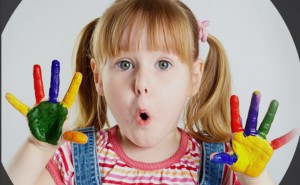Have you ever thought that the colour you choose to brand your product can be vital for future success and brand development?!
When choosing a colour it’s worth knowing that our minds are programmed to respond to colour. Colour shapes our emotions and our thoughts, but colour effects more than our mood. Colour has the ability to influencing our buying decisions.
Though colour psychology is not taken very seriously and is backed with very little data and anecdotal evidence is very often subject of discussion between marketers and advertisers.
Colour psychology studies how human behaviour is affected by colour. There are undeniable key facts about colour theory. For example it takes only 90 seconds for the customer to form an opinion about the product and 62-90% of that interaction is determined by colour of the product alone.
There are many studies and reports about the colour psychology. One them ‘The Interactive Effects of Colours’ demonstrates that there is a strong bond between brands and colours, in another words does the colour should ‘fit’ with what is sold. The research ‘Exciting Red and Competent Blue’ also confirms that purchasing intent is greatly affected by colours due to the impact they have on how a brand is perceived. This means that colours influence how consumers view the personality of the brand.
It was also revealed that human brains prefer recognisable brands, which makes colour incredibly important when creating a brand identity. It has even suggested in Colour Research & Application that it is of paramount importance for new brands to specifically target logo colours that ensure differentiation from entrenched competitors.
Taste the rainbow & Brand the Rainbow
Colour is a tricky thing. You have to use it in the right way, at the right time, with the right audience and for the right purpose in order to succeed.
Most people think that universally-loved female colour is pink. But it is not. Just a small percentage of women choose pink as their favourite colour. According to study 35% of women turn to like blue, 23% purple and 14% green colour and dislike grey, orange and brown. Findings also documented that female aversion to earthy tone and prefer primary colours with tints.
Although for men purple, orange and brown is something they prefer to stay away from. Instead, men favour blue, green and black colours.
As blue and green are favourite colours for both genders it is recommended to advertise with these colours to improve the appeal of website’s e-commerce.
There is wide agreement in the research community on the psychological effects of the blue colour.
- The colour blue is a colour of trust, peace and loyalty.
- Blue calls to mind feelings of calmness and serenity. It often is described as peaceful tranquil secure and orderly.
The world’s biggest social networks Facebook, Twitter and LinkedIn are in blue colour. Also other popular brands like Skype, Oreo, Vimeo are also using blue colour.
To conclude, I would suggest to all the leaders, office managers, directors, product designers, marketers, advertisers, store owners and all the professionals to learn colour psychology, as it can invoke as much as an 80% change in motivation when it comes to shopping, marketing campaigns, advertising and generally making decisions.
Information source: www.socialmediaweek.com

